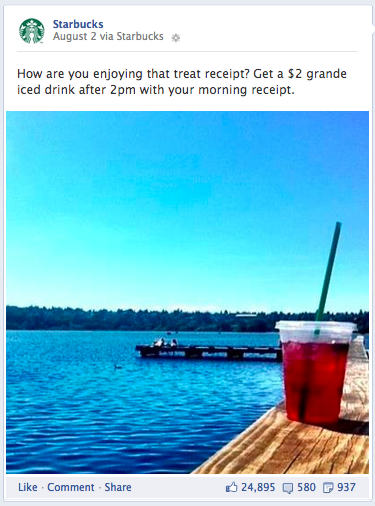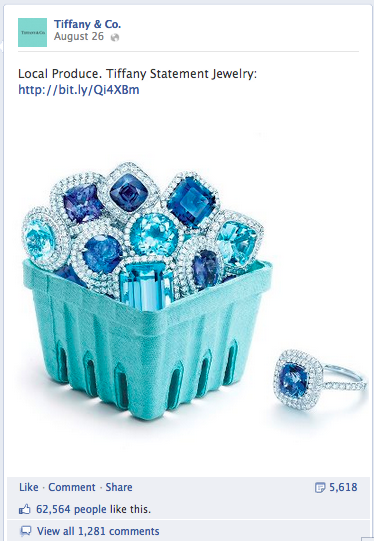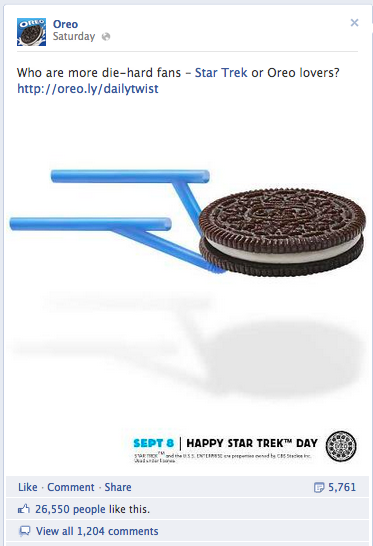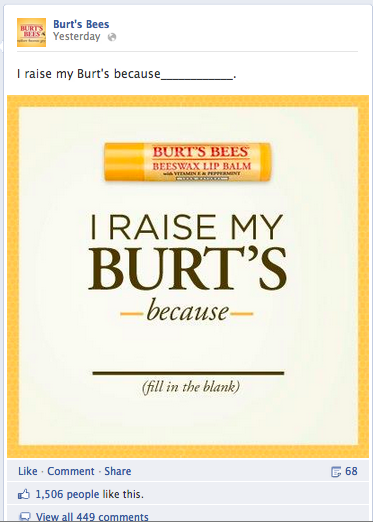Author Archive

I read this interesting post on LinkedIn today by PR professional Lisa Arledge Powell that I wanted to share with AJGpr blog readers. I TOTALLY agree with Lisa’s adage “There is no circumstance when the question, ‘Did you get my press release?’ should be uttered.”
4 Things PR Pros Should Never Say To Reporters
Here is what Lisa has to say:
Our business is about relationships. In order to foster the strongest relationships possible, you want to be sure to always communicate with efficiency and strategy and never utter the following statements:
1. “Did you get my press release?” As a current PR pro and former news anchor, I think I can speak for almost every person in the media and say that there are few things more annoying than the dreaded “Did you get my press release?” phone call. Nothing in the world of PR guarantees an immediate hang-up quite like this question. If you sent it, chances are good that they got it. They’ll let you know if they are interested. If an outlet chooses not to run your story, picking up the phone and nagging them is not going to persuade them to change their decision.
2. “What types of articles do you run?” Watch and listen before pitching. Educate yourself about the media outlet and that particular reporter’s stories before pitching them. Your story angle, pitch, and everything you do relating to your media outreach should be customized, and that includes the timing of your outreach. Know the schedule for editorial meetings and deadlines and be respectful of it. If you want the media to take the time to read and fully consider your pitch, show them that you’ve taken the time to read and understand their work.
3. “This is a perfect fit for you.” When you say this, a reporter hears one of two negative things: desperation or bossiness. They might suspect that the story isn’t a perfect fit for anyone because you’re pushing too hard, or you could come across as a know-it-all. There are always internal pressures, personal preferences, and other planned stories to consider. Only the contact you are pitching knows how your idea fits into their big picture. Let them decide whether it’s a “perfect fit.”
4. “You’ll have to be quick; I don’t have much time” Understand the time involved in a reporter’s story preparation. For example, it can take several hours on multiple days for a profile piece that involves an in-depth interview and a photo shoot. Be sure that as a PR person you understand the commitment level of what you’re pitching and that you can deliver if the media is interested. You can often save time by understanding the reporter’s multimedia needs beforehand and mapping out photo or video ideas—or you can directly supply these assets from the start.
If you take this advice to heart, I guarantee that you’ll find a much more receptive news media audience. There is a fine line between nagging and a friendly check-in that no PR pro should ever cross.
If you’re worried that a story didn’t get the results you expected, try pitching it in a different way. What may seem like a dead end can actually be an excellent motivator to get more creative with your conversations with the news media.
Just be sure to never let any of the aforementioned questions or statements slip out. You’re better than that.

Writer Suzanne Schlosberg reached out to several parenting experts for her story in Parenting magazine on “How To Keep Control And Your Cool – While Your Kids Test Limits Every Which Way They Can.” My client, parenting expert Betsy Brown Braun was among the experts who weighed in on this important topic.
For the full story click here.
Betsy is the best selling author of award winning Just Tell Me What To Say and You’re Not The Boss Of Me,
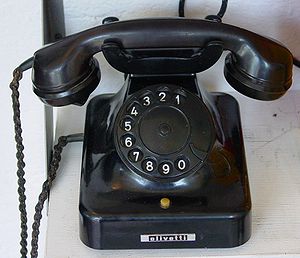
The Phone and PR Practitioners in an Era of Social Media
Yes, PR professionals have gone digital and social media is an important tool in “getting the word” out. But even in today’s digital world, many stories get “ink” because a phone call was made and the deal was sealed.
Pitching by phone to get a journalist or producer interested in a story takes preparation. Here are a few tips from AJGpr for the pitch call made perfect:
1. Do your homework – is your pitch newsworthy? Is it relevant to the person your pitching? Can you deliver the message succinctly? If not, practice until it is tight – journalist don’t have time to listen to long introductions. Be enthusiastic but business-like in your tone.
2. Make sure you are calling when a reporter, editor, producer is NOT on deadline. How do you know? You don’t always – but you can assume that newspapers are on deadline in the afternoon, weeklies that come out on Mondays have Thursday/Friday deadlines, and for monthly publications deadlines can stretch over several days. Most PR professionals have access to Vocus and Cision which lists how and when media contacts like to be pitched. Some say NO CALLS – so respect that. When you do connect, always be polite, introduce yourself, and ask, “Is this a good time?” If the answer is yes – get to pitch quickly and complete in 2-3 sentences. If the answer is no, find out when would be a good time to call back.
3. Be courteous. It counts to use your best manners – “please’s” and “thank you’s.” Don’t multi-task – be focused on your listener.
4. Be clear about the outcome you want from the journalist, producer. Do you want to book your client on a TV segment? Do you want to set up a phone interview, a face-to-face interview? Do you want them to attend an event? Send a reporter? Be sure to conclude the call with next steps, including how best to contact you.
5. Be persistent. But don’t be a pest. If you have agreed on a phone follow-up, stick with the plan. If your call is unanswered after 2 or 3 attempts to reconnect – let it go.

I found this great post by Arik C. Hanson, for his blog Communications Conversations which he posted back in September and I wanted to share it with AJGpr blog readers.
Last week, I talked about the obvious trend of “art direction” when it comes to content on Facebook. However, what’s relatively shocking is the few number of brands that have caught on to this huge content shift on the biggest social platform.
I mean, by and large, many of the larger, Fortune 500 brands are on board. Mostly because they have huge agencies assisting or guiding them (not all the credit goes to the agencies, but it surely mitigates the risk that you’d miss a trend like this when you employe a huge, international agency to keep you AHEAD of trends like this). Look just below those larger companies though, and you’ll find an overwhelming amount of companies that are still playing by the 2010 Facebook rules–share links, ask questions, use polls.
Those rules are virtually dead, my friends. Welcome to the visual era of Facebook (and, oh by the way, I really should have welcomed you about 4-5 months ago).
Truth be told, imagery is everything on Facebook right now. So, what can you do to catch up? Here are a few simple ideas (that seemingly all the early adopters are using):
Art direct shots on the fly
I know this has been well documented by now, but you know what I love most about what Starbucks does on Facebook? It’s the ad-hoc shots they share. These are shots that are not taken by a full-blow production team, but instead (most likely–my guess) by one of their PR or social media folks “on the fly.” It’s the way of the new world. Brands that are nimble enough to pull these sorts of visuals off quickly are going to succeed in the new Facebook world.
Use (pieces of) ads as the post
Look what Tiffany’s is doing here. Simply using pieces of ads as the visual and pairing it with an “ad-like” headline is enough to earn a few likes/comments.
Branded photos still work
As much as everyone wants to be Oreo right now (don’t lie, you do), good, old-fashioned branded photography still works in terms of engagement. Remember, most of your fans on Facebook are there because they are EXISTING customers. They’re just looking for reasons to like your posts. Sometimes you just don’t need to overthink it. Give them branded photography–like what Burberry does here.
Celebrate the odd dates–creatively
Oreo solved the problem so many brands have: How do we “celebrate” all these odd dates we want to recognize on Facebook, but do it in a way that inspires engagement? As we all know by now, Oreo has done it brilliantly by using their product in a creative way. I’m not say you need to go follow Oreo’s lead, but how can you use your creative flair to do the same? Visually.
Still use quotes–just make them visuals
You know those quotes you use all the time on Facebook via text? Here’s the thing–they work MUCH better as visuals. Just see what Dove has done here. You’re seeing more brands taking this approach–because it WORKS.
Make regular posts visual
You know those run-of-the-mill text posts that worked so well 4-5 months ago? Fill in the blank posts, for example? Well, why not make those visual, too? Just look what Burt’s Bees has done here. Perfect.

The widespread use of social media has fundamentally changed how people communicate and share information and that includes PR professionals.
Twitter, Facebook, YouTube and other social media sites are essential modes of communication and “getting the word out.” The speed of information sharing is faster than ever before and PR professionals have access to a wealth of content that can be shared with consumers and key media influencers seeking solutions to a problem.
Thanks to social media the dynamic between PR professional and journalists/producers has changed. What used to be a monologue is now a conversation. Journalists and producers actively seek information and sources online. Many are active on Twitter or maintain blogs. So communication is faster and getting significant stories to them is easier.
There are so many uses for social media when creating a public relations and marketing campaign. It allows for conversational marketing and is another way to reach influencers. Blogging is also another way PR professionals and their clients can share stories beyond just what goes into a press release. Creating a simple keyword based search on Twitter can connect companies with people at exactly the right time to serve as a helpful resource.
At AJGpr, we embrace multiple channels of social media and use it to complement traditional means of marketing and creating brand awareness.

At AJGpr, a Los Angeles PR firm, we provide GOOD PR because we:
- tell the client what they need to hear instead of what they want to hear.
- recognize that the best “PR strategy” needs good follow-up.
- are not just about the over-glorified launch. AJGpr helps build and sustain a groundswell of brand support — incrementally changing consumer behaviors via a steady stream of relevant and candid communication to both “media” and “consumers.”
- are proactive and cutting edge in idea generation.
- find the balance.
- leverage pre-existing relationships with influential people — relationships built on trust and credibility earned over years of service.
- always “gets ink” because a good story has been well told to the right people.
Dr. Fran Walfish, Psychotherapist to Expert Comment on Governor Jerry Brown Signing Senate Bill 1172
2012


Heidi Smith Luedke reached out to my client, Fran Walfish Psy.D., a Los Angeles-based clinical psychotherapist for her piece in Calgary’s Child about why kids tattle and how to respond.
Here’s the full story:
Nobody likes a tattletale – not even their mother or father. If your child’s playdates and sleepovers are punctuated by whiney reports of misdeeds and injustice, you may be tempted to clear your kid’s social calendar. Not so fast. Interactions with siblings and friends allow kids to practice communication, negotiation and compromise. And dissatisfaction is part of the process.
“In early childhood, it’s normal for kids to share social problems with parents,” says psychologist and school consultant Michael Thompson, Ph.D., author of Best Friends, Worst Enemies: Understanding the Social Lives of Children. At times, they legitimately need our help resolving disputes and soothing hurt feelings. But by second grade, the prohibition against inviting adults into social conflicts is clear. “Kids who tattle get labelled – tattletale, squealer, snitch – and left out,” says Thompson. Bringing infractions to an adult’s attention sets your kid up for friendship failure.
Why kids tattle
Parents might assume kids tattle because they don’t feel empowered to stick up for themselves, says Fran Walfish, Ph.D., a child and adolescent psychotherapist. That’s not true. “Kids tattle because they’ve developed a strong sense of right and wrong and they start policing other people,” says Walfish. Tattletales suffer from an overdose of conscience.
“Tattling at home may also be rooted in sibling rivalry,” says Walfish. An older child might feel they are held to a higher standard than their younger siblings, or that they are disciplined more severely. And they may be right. “Parents need to take an honest look within,” says Walfish. “If you are harsh and judgmental with your children, they’ll act the same way with peers.”
How to respond
It seems obvious: giving attention to a child who tattles will only reward them for tattling. But experts say parents shouldn’t dismiss kids’ reports or tell them to “get over it.” Sometimes kids who tattle just want a safe place to share their concerns.
“Kids won’t say, ‘I need you to listen to this and be outraged on my behalf and then do absolutely nothing,’” says Thompson, “but 90 per cent of the time that is what they want.” When your child comes to you with a story, listen, accept, acknowledge and bear it. Ask questions about how your child plans to handle the situation – that will bring out their inner resilience.
Tattletales who judge and blame are usually more focused on their peers’ behavior than their own. “Position yourself as a mediator,” says Walfish. Kids should present their concerns to each other, not to authority figures. Give each child a chance to speak their piece without interruption or name-calling. You want them to learn how to wrestle with a conflict face-to-face without demeaning the other person.
“This won’t come easy,” Walfish cautions. It is common for parents to get drawn into the dialogue. Step back emotionally so you can coach your child through it without taking sides.
After each child has a chance to talk, ask, “How could you work this out?” Listen to kids’ ideas for addressing the problem. If they don’t have any, offer some suggestions. Let kids choose how to proceed. “The resolution is not nearly as important as the process of working it out,” says Walfish.
Except in extreme circumstances – like when one child is intentionally hurt or belittled – don’t take sides or punish the other child for what a tattletale reported. “Play the role of supportive consultant, not hired gun,” says Thompson. You’ll reinforce the tattler if you act on the information they offered.
Chronic tattling can leave parents feeling frazzled. It may help to arm yourself with kind, matter-of-fact phrases you can use in response, says Walfish. Say, “There are only two grown-ups in this house, and it’s our responsibility to enforce the rules.” Assuring ‘kid cops’ that you are on the job may reduce their need to patrol and shift their attention back to their own activities.
Practice compassion
Not all sharing is tattling, and there will certainly be times when you must intervene to protect your child. Be cautious in your assessment of the situation. “Parents are too quick to define peer behavior as bullying and to accuse other kids, parents or teachers of wrongdoing,” Thompson says. Rushing to judgment reinforces a child’s sense that they are a victim in need of rescue.
It’s usually best to diffuse hurt feelings with empathy instead of going on the offensive. Set the expectation that tomorrow will be a better day. Spend one-on-one time with your child doing something they enjoy. Loving attention can quiet even the noisiest tattletale.

After a 6 month search, Studio City, an Emmy Award-Winning Brand Management Company chose AJGpr to launch their new public relations campaign.
Studio City, creates about 8-10,000 TV promos a year. Their clients include Disney/ABC domestic television, NBC Universal, CBS domestic television distribution, 20th Television. They are the marketing agency behind the #1 Syndicated Talk Show – Ellen; the #1 syndicated morning show Live! With Kelly and Michael; the #1 sporting event of 2012 – The Summer Olympic Games; the #1 Drama in Weekend Syndication – Criminal Minds; and the #1 drama on Cable TV – Burn Notice. And now they can add another number #1 show “Katie.”
In addition, they have branched out — and are creating original material for television. Studio City is the creator and producer of the new entertainment news show, Dish Nation distributed by 20th Television (a division of 20th Century Fox). Along with being the show runner for its actual production, Studio City also produced the episodic and launch promos for the 6-week summer test-run. The launch and episodic promos helped grow the audiences from the seven test markets 40%, ultimately convincing 20th Television to pick the show up for a 52 week full series run.

After a succesful Grand Opening in May in Fullerton, CA Asiana Grill Yoshinoya brought AJGpr to oversee the PR campaign for the opening of their second store near the USC campus on August 4th.
AJGpr has secured the following press hits for the new store – Restaurant Magazine, QSR, Grub Street, The Daily Breeze, Food Feed,The Daily Trojan, FoodNewsLa and LA Dine Club.
Executive Vice President, Manuel Villarreal says, “We experienced great success launching our first Asiana Grill Yoshinoya in Fullerton last May, and we are excited to expand the new concept to Los Angeles. Customers in Fullerton love Asiana Grill Yoshinoya’s fast-casual dining which centers on the customer combining a rich selection of menu styles, sauces, proteins, and sides to create the perfect blend of Asian flavors. With the new store’s proximity to the University of Southern California, a prime location, we expect continued success with this second opening.”
Asiana Grill Yoshinoya customers experience a blast of exotic Asian flavors put together the way they like it. This create-your-own menu concept is a departure from the meal-in-a-bowl service for which Yoshinoya is famous.
Depending on the protein choice selected by the customer, dishes are prepared fast and fresh before their eyes, either teppanyaki style or yakitori style. Cooked fresh on the grill, in an exhibition style open kitchen, Asiana Grill Yoshinoya’s dishes are nutritious, healthy, and low in fat.
Customers choose their meal to be served on a plate, as a soup, a salad, or on a bun. Yoshinoya has created several unique Asian sauces exclusively for Asiana Grill Yoshinoya. The sauces add a rich, distinct flavor to each dish, which customers will savor in every bite. The signature Beef Bowl ®, a Yoshinoya customer favorite, has joined the Asiana Grill Yoshinoya menu.
Villarreal says, “In opening our second store near the USC campus, Yoshinoya is expanding the brand and reaching new markets. We look forward to launching several more restaurants in the coming months and by 2013, we expect to make Asiana Grill Yoshinoya available for franchising.”



